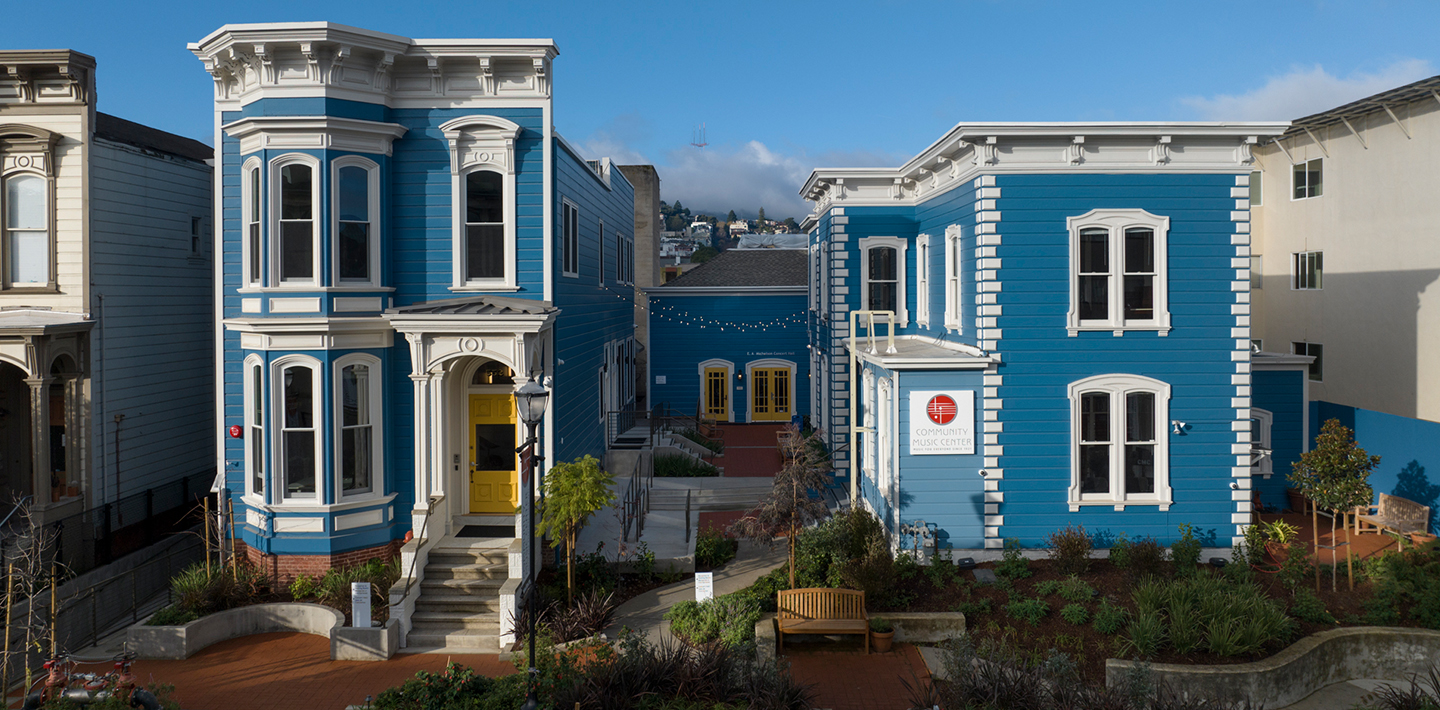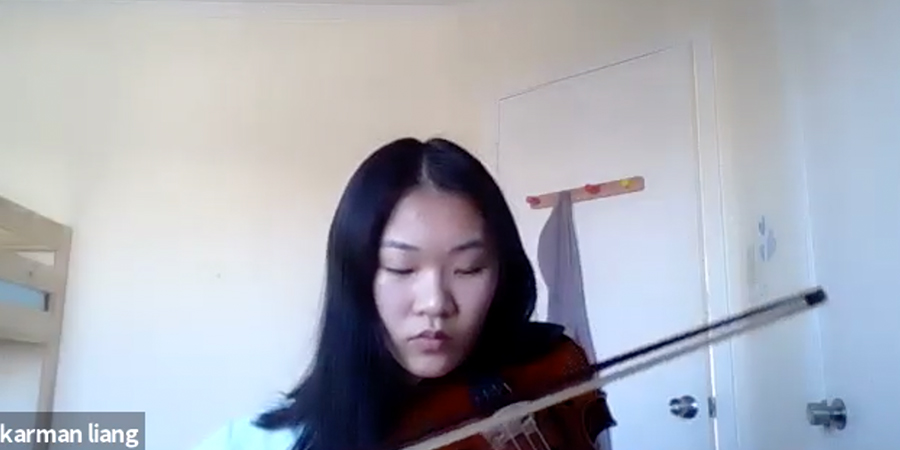Karman Liang demonstrates the musical haiku composing process during a YMP Zoom workshop.
February 17, 2021
By Sylvia Sherman, Program Director
Last spring, Teen Jazz Orchestra Director Marcus Shelby started a musical reflection process in his class to elicit responses from his students to the COVID-19 pandemic, the shelter-in-place lockdown, and racial justice protests, helping students to connect those responses to musical vocabulary as building blocks toward composition.
This winter, CMC’s Young Musicians’ Program is drawing from this experience to shape its annual composition project. On January 9, YMP Coordinator, Katie Wreede shared a framework for the project with Young Musicians Program middle and high school students to create “musical haikus.” That day, Berkeley poet Alan Bern did a brief presentation for the students emphasizing the importance of painting a picture with words and shared his own COVID-19 musical Haiku. YMP faculty member Christian Bonvin offered some of his prior compositions created from musical haikus. Then YMP student leader, Karman Liang shared a haiku she had developed in advance of this presentation to demonstrate with Katie Wreede how the composition process would work for the students. Karman started by sharing her poem:
This is a grim time.
Stress, fear, and loneliness loom.
But we’ll rise above.
In Karman’s words, “I wanted this poem to reflect on what many people, including myself, have felt during the pandemic but also to be a message of hope, because we will all overcome this battle together.”
Karman and Katie modeled how to create a musical reflection from the intent of the poem. Katie led the students through a “response” process in which they gave one word emotional responses to Karman’s poem. She next invited the students to share how to musically represent each word. From this process, Karman was given various kinds of musical sounds to create, such as long notes, low notes, low notes with tremolo, and high notes at the end to reflect the more hopeful ending of her poem.
Following this workshop and through the help of their theory teachers, each YMP student has worked on developing their own musical haiku, which were recently shared in an informal listening.
Following the workshop, we asked Karman Liang to reflect on her process of writing a haiku.
“I had three simple goals in mind when I was writing my haiku poems: short, vivid, and somewhat current. Since it was recommended that these haikus are based on current events, I drew inspiration from my experiences during COVID isolation and how it has affected me. For example, I asked myself how I was staying grounded or how I have survived distance learning.
“The writing process was a chance for me to sit down and reflect on everything that has happened to me during this pandemic. I reflected on the positive aspects of it, such as hiking through the serene forests, and the more negative aspects, such as feeling very anxious and lonely amid shelter-in-place. I also gave myself a very small timeframe to write each poem to avoid overthinking them. As I thought and wrote, I began to develop a deeper understanding of my experiences during these strange times. For me, translating my thoughts into haiku poems was a really interesting way to express them. All in all, I enjoyed the whole process of writing these haikus.”
“This is the haiku I chose to musicalize, which reflects how I felt during the dreadful summer:
The same off-white walls
The same worrisome thoughts
Suffocated by it all
“To be able to musicalize this haiku, I needed to have compositional elements to work with. I did that by turning descriptive words of the poem into musical terms. First, I thought of words describing how the haiku made me feel. The first line gave off a bored and lonely mood and the second and third lines made me feel pain and heaviness. After that, using the words bored, lonely, pain, and heaviness, I started to think about musical elements that reflected these terms. The words bored and lonely made me think of slow, smooth, soft, which translates to legato, adagio, and piano, in musical vocabulary. The words pain and heaviness reminded me of trembling and loud, which is put as tremolo and forte, in musical terms. With this information, I was ready to begin composing a motif.”



